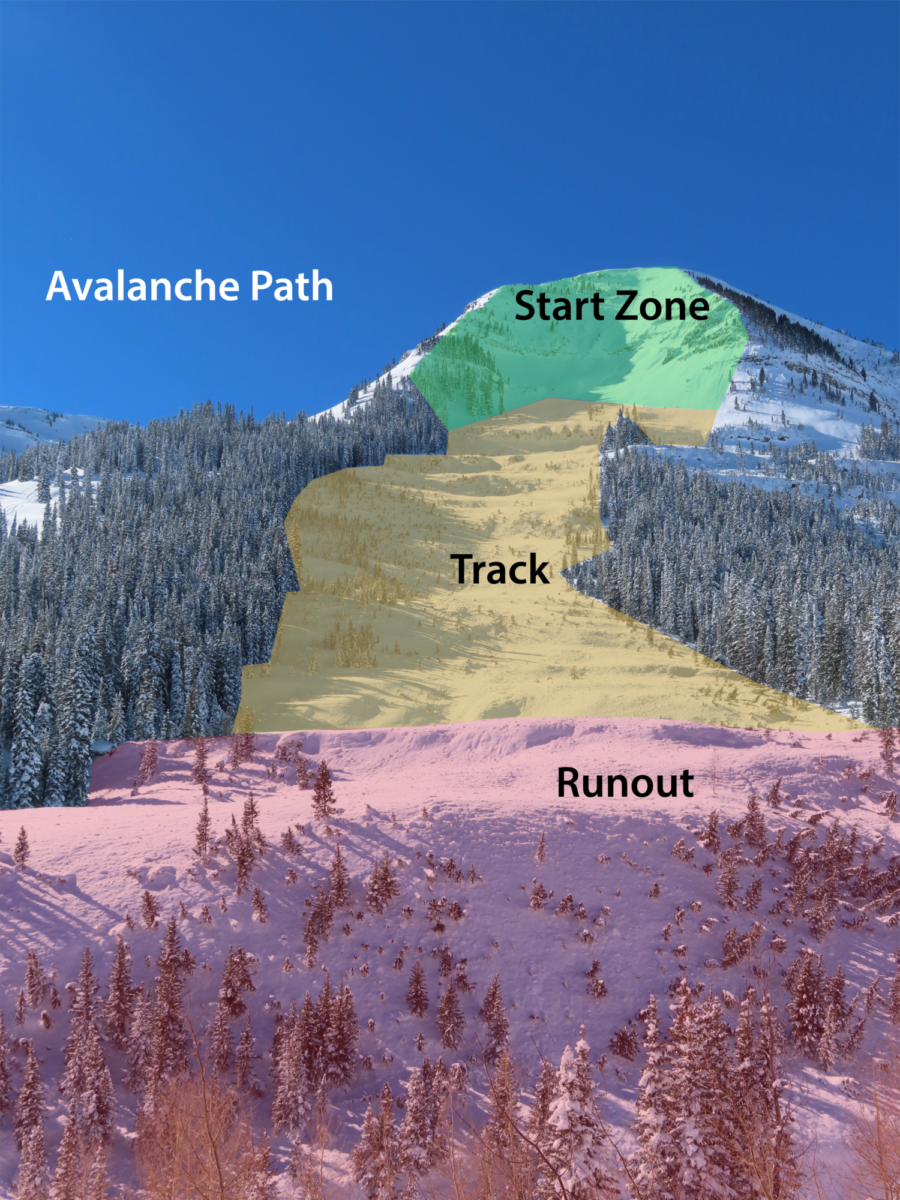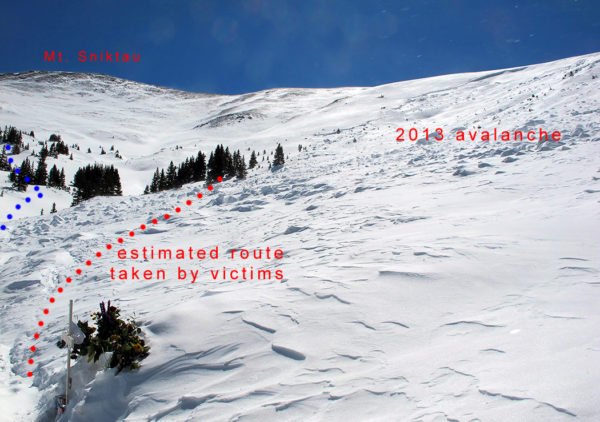The bottom of the avalanche path where debris slows and stops.
The runout is the lower portion of an avalanche path where the avalanche slows down and stops. The location of the runout depends on terrain characteristics and the relative size of the avalanche. Historic runout zones are commonly demarcated by mature trees. Under certain conditions, people can trigger avalanches from low in the runout zones which can then overrun their position.
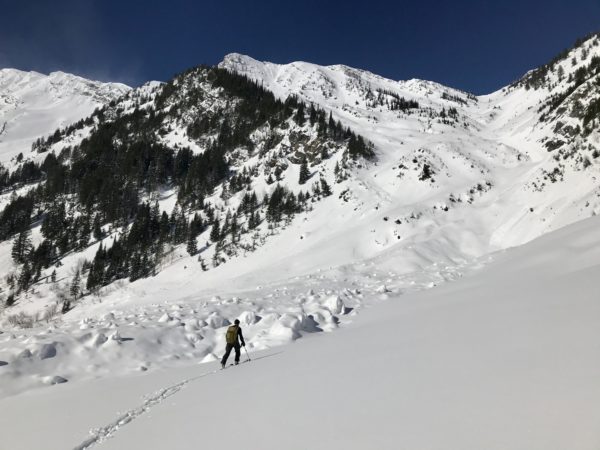
A skier traverses through the runout zone. Even though the runout zone is not steep enough to start an avalanche, it is still in harm’s way from overhead hazards. Credit: Flathead Avalanche Center
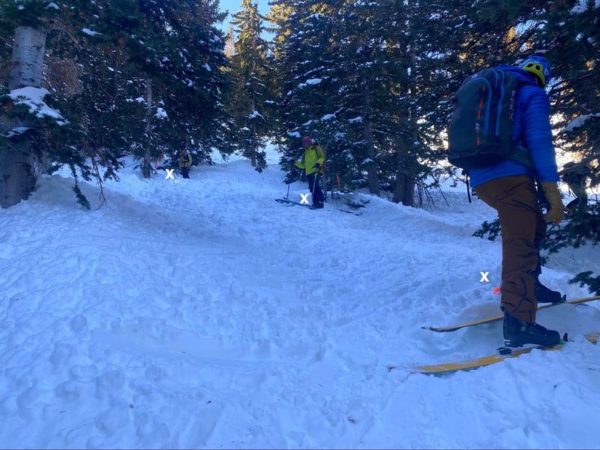
Runouts can include gladed terrain. This avalanche started on a steep, open slope above and buried several skiers who were ascending through the trees. Credit: Utah Avalanche Center
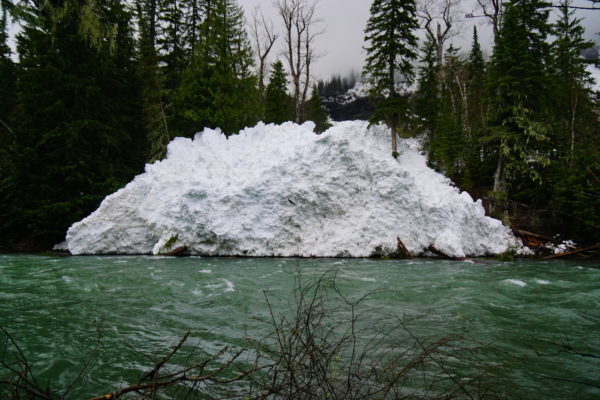
Avalanches can run into terrain where overhead hazards are not obvious. The snowpack can be entirely different high above you in the start zone compared to what you are seeing in the runout, and the start zone can be obscured by clouds or terrain. In this photo, an avalanche released 5,000 feet above and ran into a snow-free valley floor. Credit: Flathead Avalanche Center
